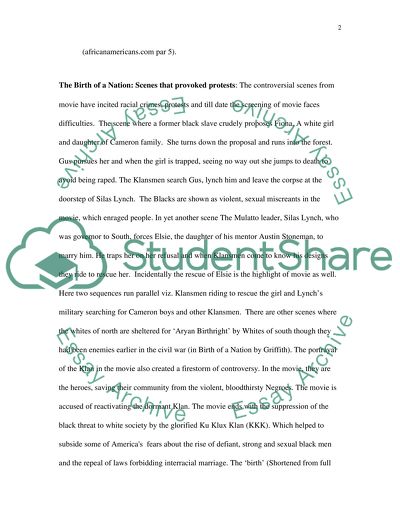Cite this document
(“Controversy in the movie The Birth of a Nation and how it effected Essay”, n.d.)
Controversy in the movie The Birth of a Nation and how it effected Essay. Retrieved from https://studentshare.org/miscellaneous/1527566-controversy-in-the-movie-the-birth-of-a-nation-and-how-it-effected-jazz-and-blues-for-that-time-period
Controversy in the movie The Birth of a Nation and how it effected Essay. Retrieved from https://studentshare.org/miscellaneous/1527566-controversy-in-the-movie-the-birth-of-a-nation-and-how-it-effected-jazz-and-blues-for-that-time-period
(Controversy in the Movie The Birth of a Nation and How It Effected Essay)
Controversy in the Movie The Birth of a Nation and How It Effected Essay. https://studentshare.org/miscellaneous/1527566-controversy-in-the-movie-the-birth-of-a-nation-and-how-it-effected-jazz-and-blues-for-that-time-period.
Controversy in the Movie The Birth of a Nation and How It Effected Essay. https://studentshare.org/miscellaneous/1527566-controversy-in-the-movie-the-birth-of-a-nation-and-how-it-effected-jazz-and-blues-for-that-time-period.
“Controversy in the Movie The Birth of a Nation and How It Effected Essay”, n.d. https://studentshare.org/miscellaneous/1527566-controversy-in-the-movie-the-birth-of-a-nation-and-how-it-effected-jazz-and-blues-for-that-time-period.


